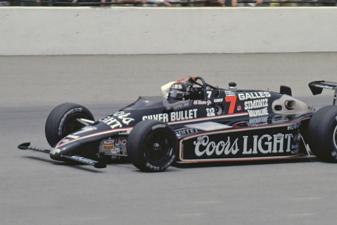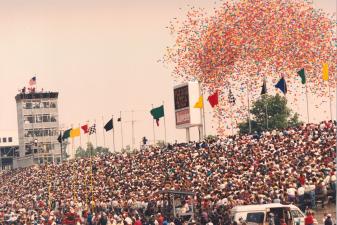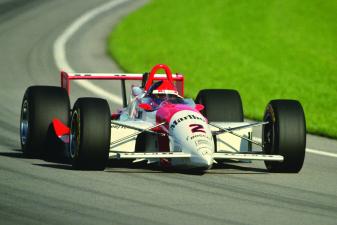The End of the Drought

Journalists Al Pearce and Mike Hembree chronicle the journey of NASCAR’s best as they drive their way to that landmark first victory in 50 First Victories. With a combined ninety years of coverage of one of America’s grassroots sports, they bring a wealth of knowledge and experience to the stories of these fast-and-furious heroes, drivers who ran to the ragged edge—and often past it—in pursuit of the checkered flag. In this excerpt from the book, catch a sneak peek at Bill Elliott's path to victory.
When Bill Elliott finally ended a long drought and joined the ranks of NASCAR Cup race winners, it happened under unlikely circumstances and in an unlikely place.
Elliott had charged out of the north Georgia mountains to challenge the stars of NASCAR. He drove fast and talked slow, his Georgia drawl so pronounced that some interviewers strained to understand what he was saying. He did most of his talking on the track.
Elliott made his Cup debut in 1976 at Rockingham, North Carolina, driving a Ford entered by his family-owned team. He ran only thirty-two laps, parking with oil pump issues.
Leap forward seven years later, and Elliott has run 114 Cup races with the same number—“0”—in his win column. It is the final race of the 1983 season, and Elliott has made the cross-country trip to Riverside (California) International Raceway’s road course. A short-track asphalt star before he jumped into Cup racing, Elliott has no particular love for road racing and, with no wins, starts the Winston Western 500 as an outlier of sorts.
That would change in the rain of that California afternoon. A second place finisher eight times, Elliott finally would cross over into victory lane.
Tim Richmond and Darrell Waltrip were racing for the lead with seven laps to go when they crashed together in Turn Nine as rain began to fall. Richmond and Waltrip regained control of their cars, but their spins allowed Benny Parsons to take the lead, and Elliott followed him into second.
Weather put the field under caution temporarily, but the race returned to green conditions with five laps remaining. Elliott wasted no time. He zipped past Parsons at the first opportunity and sprinted into a comfortable lead. A few minutes later, harder rain fell, producing another caution. It quickly became clear that the race couldn’t be restarted, and Elliott was home free, rolling into victory lane as rain pelted the track.
It was late November. Christmas would be a big one that year in the Elliott family.
“I can’t believe it; I just can’t believe it,” Elliott said. “Everything went so wrong this year. Everything went so right today.”
He had to attempt the winning pass quickly, Elliott said, because weather was threatening and opportunities were disappearing.
“I knew I had one chance to do it,” he said. “I drove it down in there. Me and Benny got together, but I knew that was the only chance I had. Then Tim Richmond came up on him, and they got together.
“I knew then I had a good shot at it. The rains came, and I was praying for that. I just kept on digging.”
He led the last five laps—the only laps he led all day.
Elliott had broken through.








